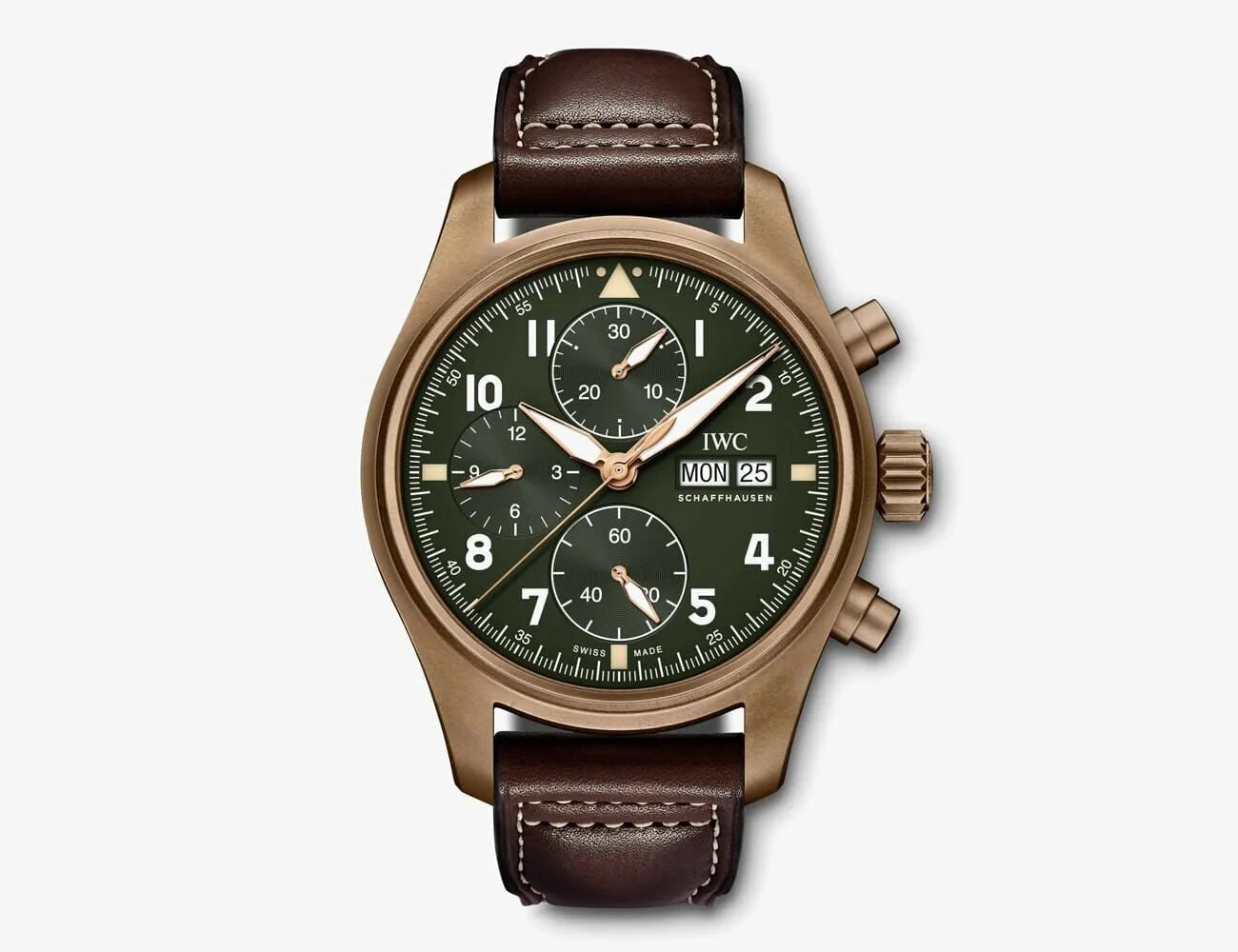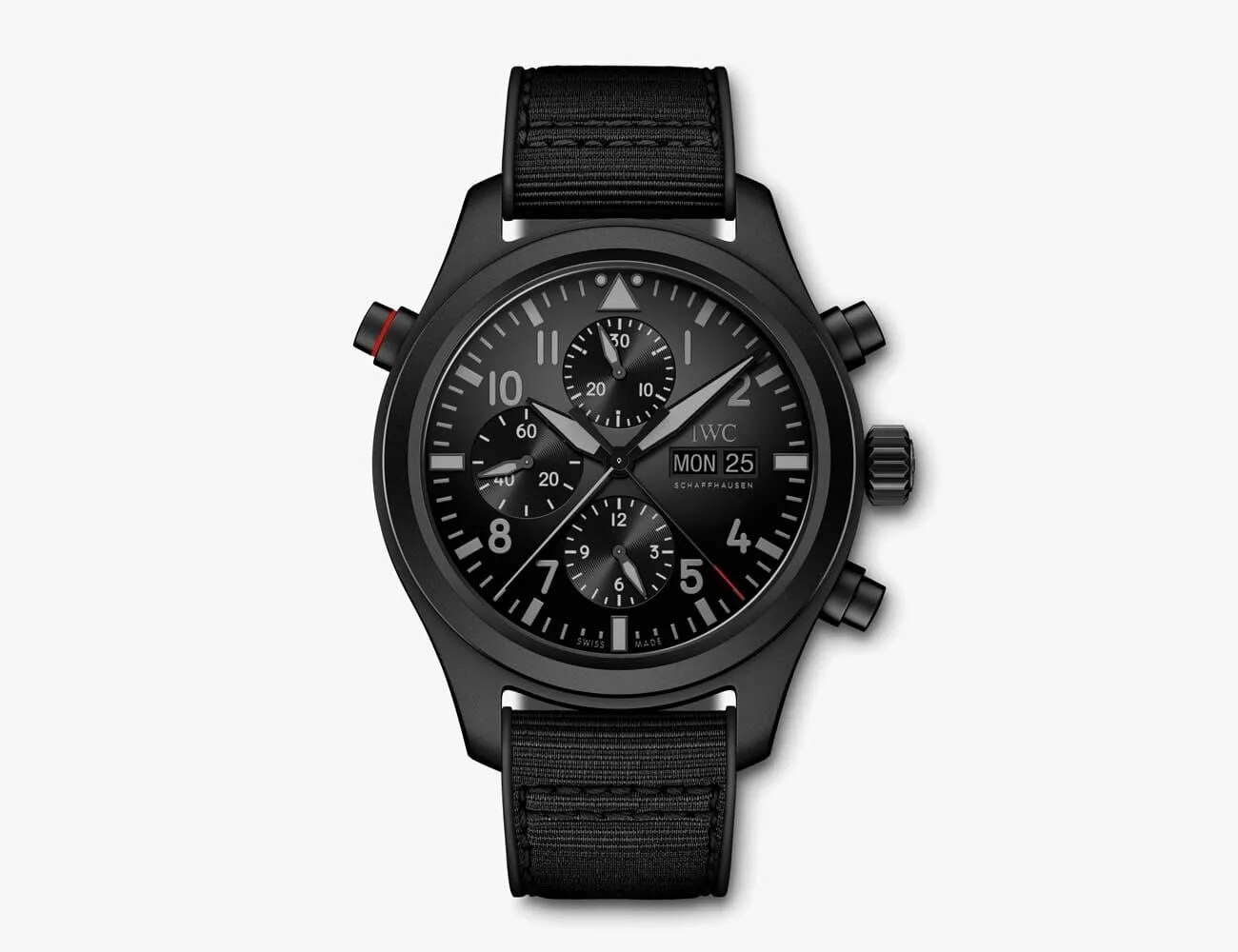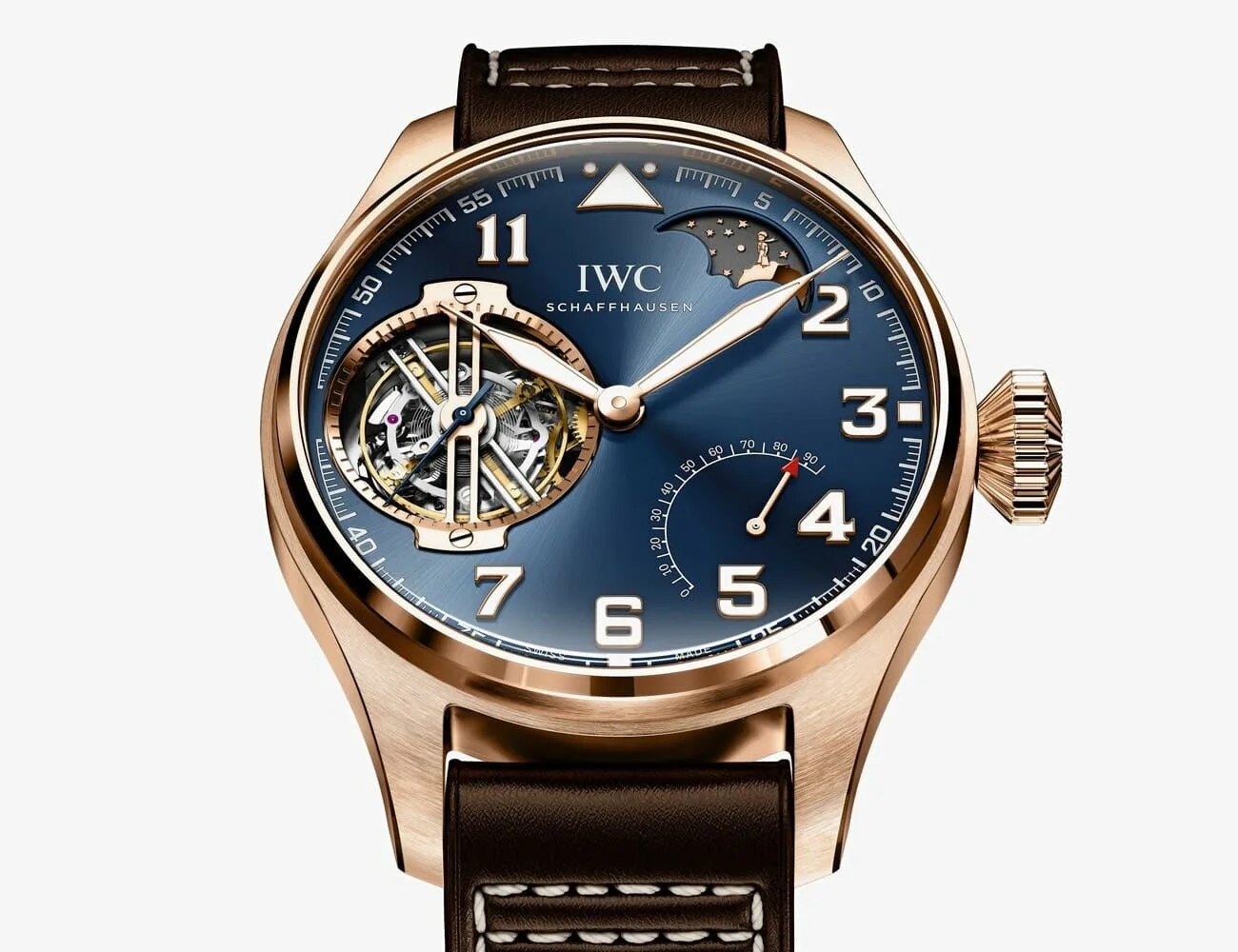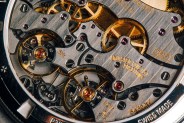Upshot: Ahead of 2019’s SIHH show, IWC has released several new additions to its pilot’s watch line, including the Pilot’s Watch Timezoner Spitfire Edition “The Longest Flight” (covered separately), the Pilot’s Watch Chronograph Spitfire, the Pilot’s Watch Double Chronograph TOP GUN Cerataium, and the Big Pilot’s Watch Constant-Force Tourbillon Edition “Le Petit Prince.” Each model offers the pilot’s watch enthusiast something different, and the releases run the gamut with respect to price and materials.
Who It’s For: The Pilot’s Watch Chronograph Spitfire is a 41mm chrono with a movement derived from the 69000 family. It utilizes the IWC 69380 column-wheel movement and features a triple-register layout and day-date display in a bronze 41mm case with green dial. If you’re a fan of pilot’s watches, chronographs, bronze watches, watches with unique dial colors, or watches that utilize in-house movements, then chances are you’ll find something to like here. Price (which is not finalized and is subject to change) is $6,250.

Next up is the Double Chronograph TOP GUN Cerataium, the first use of Ceratanium (a unique material developed by IWC that combines the benefits of titanium and ceramic) in a pilot’s watch. The Double Chronograph features a Ceratanium 44mm case housing the IWC calibre 79230 with split-seconds chronograph functionality. The Ceratanium coating, which appears black, is matched by a handsome black dial and black leather strap. At $18,500 (price subject to change) this is certainly something aimed more at the collector market and at those who appreciate complicated watchmaking and materials innovation.

The final new release is the Big Pilot’s Watch Constant-Force Tourbillon Edition “Le Petit Prince,” a limited edition of 10 watches. This $235,000 (price subject to change) 46.2mm timepiece features another first for IWC in that it’s been produced in hard gold, a special new version of red gold (hard gold is evidently roughly 5 to 10 times more wear-resistant than conventional red gold). A constant force mechanism ensures consistent amplitude in the watch’s movement (and thus increased accuracy), and you also get a perpetual moon phase display that only requires adjustment once every 577.5 years, at which point we’ll likely be jars of sentient jelly sitting on a shelf in some Martian laboratory and not requiring wristwatches, anyway.


